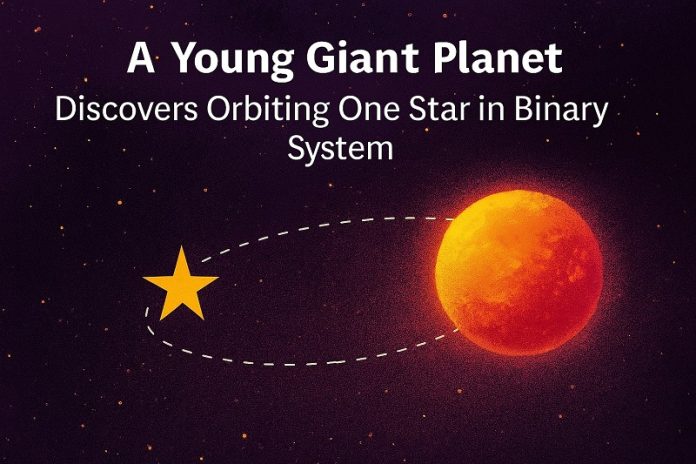
Astronomers have discovered a young gas giant planet orbiting one star in a fascinating double star system—while the other star still has a disk of material that could form planets in the future.
The system, called HD 135344 AB, lies about 440 light-years away from Earth in the constellation Lupus and offers a rare glimpse into how planet formation can follow different paths—even for stars born at the same time.
The research team, led by Tomas Stolker from Leiden University in the Netherlands, spent four years studying the system.
Their findings were recently published in the journal Astronomy & Astrophysics.
HD 135344 AB includes two stars, referred to as star A and star B. Both stars are roughly 12 million years old and orbit each other at a wide distance.
Star B has long interested scientists because it is surrounded by a protoplanetary disk—a swirling ring of dust and gas that can form planets.
In contrast, star A appeared to lack such a disk, leading scientists to wonder if it had already finished forming planets.
Curious about this possibility, Stolker and his team focused their attention on star A. Using the SPHERE instrument on the European Southern Observatory’s Very Large Telescope in Chile, they detected faint light that hinted at the presence of a possible planet.
At first, they weren’t sure if they had found a planet or just a background star far behind the system.
To confirm their discovery, the team used another advanced tool called the GRAVITY instrument. This technology combines the light from four large telescopes, allowing researchers to track the movement of the suspected planet with extreme accuracy.
Over four years, they observed star A and the planet moving together in space. This confirmed that the object—now named HD 135344 Ab—is indeed a planet and not just a distant star in the background.
HD 135344 Ab is a gas giant about 10 times the mass of Jupiter, and it orbits its star at a distance similar to Uranus’s orbit around our sun.
What makes this discovery so important is that it shows one star in the system has already formed a planet, while the other is still in the process of doing so. This suggests that planet formation in double star systems can happen on different timelines.
In the future, scientists plan to continue observing the planet using GRAVITY and eventually with the Extremely Large Telescope (ELT), which is currently being built. These tools may reveal more about the planet’s atmosphere and how it formed.
The researchers also hope to find similar gas giants around other young stars—possibly uncovering a new group of planets that have been hiding in plain sight.



